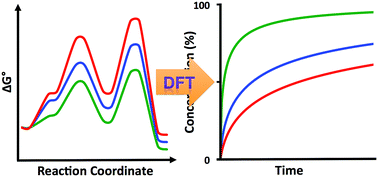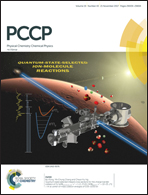Quantitative DFT modeling of product concentration in organometallic reactions: Cu-mediated pentafluoroethylation of benzoic acid chlorides as a case study†
Abstract
DFT calculations are widely used for computing properties, reaction mechanisms and energy profiles in organometallic reactions. A qualitative agreement between the experimental and the calculated results seems to usually be enough to validate a computational methodology but recent advances in computation indicate that a nearly quantitative agreement should be possible if an appropriate DFT study is carried out. Final percent product concentrations, often reported as yields, are by far the most commonly reported properties in experimental metal-mediated synthesis studies but reported DFT studies have not focused on predicting absolute product amounts. The recently reported stoichiometric pentafluoroethylation of benzoic acid chlorides (R-C6H4COCl) with [(phen)Cu(PPh3)C2F5] (phen = 1,10-phenanthroline, PPh3 = triphenylphosphine) has been used as a case study to check whether the experimental product concentrations can be reproduced by any of the most popular DFT approaches with high enough accuracy. To this end, the Gibbs energy profile for the pentafluoroethylation of benzoic acid chloride has been computed using 14 different DFT methods. These computed Gibbs energy profiles have been employed to build kinetic models predicting the final product concentration in solution. The best results are obtained with the D3-dispersion corrected B3LYP functional, which has been successfully used afterwards to model the reaction outcomes of other simple (R = o-Me, p-Me, p-Cl, p-F, etc.) benzoic acid chlorides. The product concentrations of more complex reaction networks in which more than one position of the substrate may be activated by the copper catalyst (R = o-Br and p-I) are also predicted appropriately.



 Please wait while we load your content...
Please wait while we load your content...